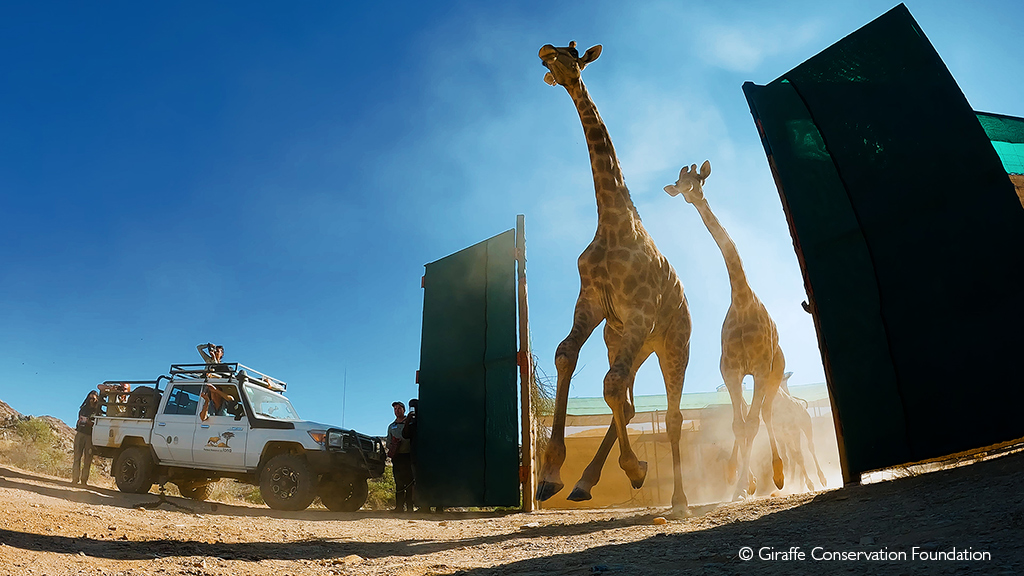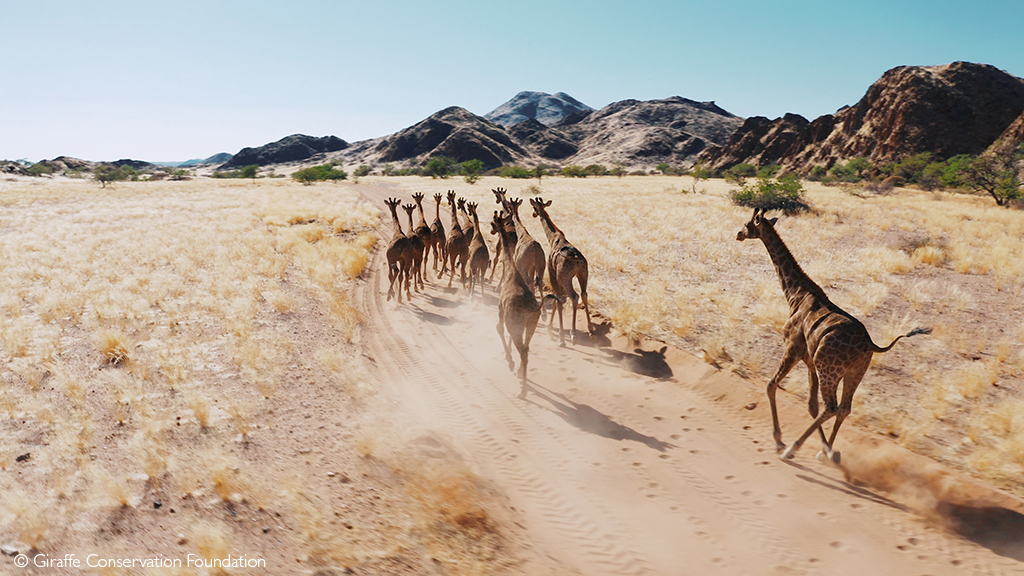 A second group of Angolan giraffes, numbering 13, has been successfully relocated to Iona National Park, Angola, as part of an ongoing conservation initiative to restore and enrich the park’s biodiversity. Last year, Angolan giraffes were returned to their historical home after an absence of more than a century, and this second translocation continues this conservation success story.
A second group of Angolan giraffes, numbering 13, has been successfully relocated to Iona National Park, Angola, as part of an ongoing conservation initiative to restore and enrich the park’s biodiversity. Last year, Angolan giraffes were returned to their historical home after an absence of more than a century, and this second translocation continues this conservation success story.
Seeing these majestic animals making their first steps in their new home was a sight no one will ever forget – a small step for the giraffe but a big step for wildlife conservation in Angola.
When Angolan giraffe returned to Iona National Park in Angola last year, this was only the start of a long-standing commitment to species conservation by the Giraffe Conservation Foundation, African Parks, and the Government of Angola, who had teamed up to bring back Angolan giraffes after a long absence. This week, an additional 13 giraffes made the long journey from central Namibia to Iona National Park in Southwest Angola. The Giraffe Conservation Foundation and African Parks sponsored the epic move. The release of the 13 giraffes was witnessed by President João Lourenço of Angola and a high-level ministerial delegation comprising over 16 ministers, the governor of Angola’s Namibe Province, traditional authorities and other dignitaries.


“The safe arrival of these giraffe to their historic home range is another critical step in restoring Iona National Parks’ ecological equilibrium. Their successful release holds huge potential to positively influence the local tourism industry. This, in turn, could generate jobs in tourism-related services, increase income for local communities, and raise awareness about the importance of preserving biodiversity”, commented Augusto Archer de Sousa Mangueira, the governor of Namibe Province.
After their capture in Namibia, the giraffe travelled over 1,300km in a journey that lasted over 48 hours before their successful release in Iona National Park, Angola, on Saturday, 18 May 2024. Last year’s translocation was successful with the introduced giraffe adapting well to their new home. To bolster this small population and help with their long-term viability, it was decided to bring in additional giraffes to help further restore the region’s ecological processes. Giraffes are important landscape gardeners who shape vegetation through browsing and dispersal of seeds due to their selective feeding habits.

“Bringing Angolan giraffe back to Iona National Park in Angola last year was an amazing achievement and has the makings of a true conservation success story. By reintroducing giraffe to their historical range, we re-establish their range, ensure their long-term survival and contribute to restoring the ecological balance in the region. We are excited to continue our collaboration with African Parks and the Angolan government who are great partners in these conservation efforts. Together, we can make a real difference”, said Stephanie Fennessy, executive director and co-founder of the Giraffe Conservation Foundation.
 DID YOU KNOW that African Parks offers safari camps (lodges and campsites) where 100% of tourism revenue goes to conservation and local communities? Find out more and book your African Parks safari.
DID YOU KNOW that African Parks offers safari camps (lodges and campsites) where 100% of tourism revenue goes to conservation and local communities? Find out more and book your African Parks safari.

Pedro Monterroso, park manager at Iona National Park, said: “Last year’s reintroduction of giraffe to Iona National Park was a pivotal moment in the park’s history, signifying a major milestone in the ongoing commitment of African Parks and the Ministry of Environment to restore Iona National Park towards ecological, social and financial sustainability. Today, with the release of another 13 animals, I am thrilled to witness the ongoing restoration of the park’s biodiversity. Strong partnership is essential for successful conservation and we remain grateful to the Angolan Government and the Giraffe Conservation Foundation for their unwavering support and collaboration.”

Whilst giraffe populations in general have declined in the past 35 years due to habitat loss, poaching, and other human-induced factors, recent targeted giraffe conservation efforts have seen positive effects, and several populations have started to rebound. Conserving and protecting giraffes is crucial for their survival and maintaining the balance and functionality of Africa’s ecosystems. Translocations are essential and impactful tools for conservation, and in particular, this cross-border move is a testament to the commitment of conservation by many players in Africa who work tirelessly for the protection of Africa’s unique biodiversity.
To comment on this story: Login (or sign up) to our app here - it's a troll-free safe place 🙂.![]()





